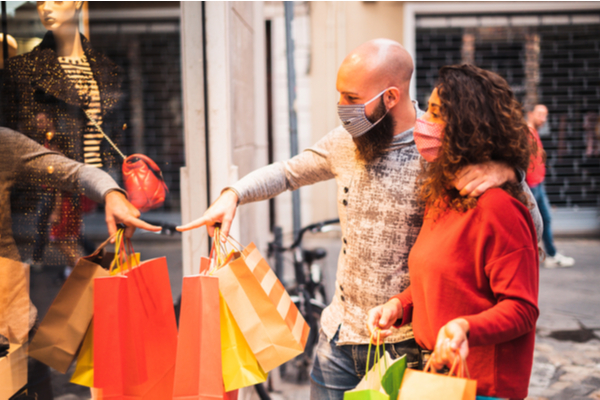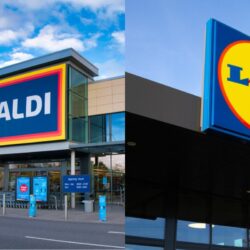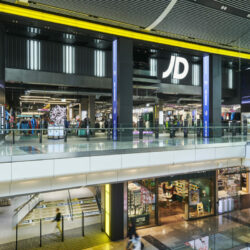When retail insights firm Springboard revealed last month that footfall was expected to drop 62 per cent over the six weeks leading up to December 22, retailers braced themselves for what could possibly be the hardest Christmas in recent memory. Especially smaller, local retailers.
As the Covid-19 pandemic shows no sign of abating and a large number of shoppers continue to stay home, how can these smaller retailers compete with larger chains? Is it possible to still have a successful Christmas without having to rely on digital avenues?
Perhaps the first and most obvious way to tackle this challenge is for the businesses to focus on areas that help them perform well and differentiate them from the larger, multiple retail chains.
“This could involve acknowledging that their cost base might higher, and that they might need to work harder to attract and retain customers without huge marketing budgets,” said Simon Geale, senior vice president clients solutions at Proxima.
“If they accept these factors, they can begin to compete with large retailers in areas where they are better equipped.
“Personalisation in customer service can demonstrate that smaller retailers are going the extra mile to create experiences for the customers, and this might involve relying on local delivery or forming click-and-collect alliances with other retailers.
“Equally, they can make the concept of being local a core part of their product. There is much love for local this year because of what it represents to consumers, so retailers might look to leverage social media, events, or communities of interest within the local community.”
Chris Biggs, global head of retail at Boston Consulting Group, said small and independent retailers should focus on the experiential element of shopping and “build strong in-person connections between their brand and the customer”. He said this was something larger and online retailers typically struggle with, giving smaller retailers a huge advantage.
“Amid the difficulties of the pandemic, high street shops should also emphasise their grassroots role in the local community, especially if family-run, so that shoppers can feel that they are not just buying for themselves, but are also making a positive difference locally,” Biggs explained.
“Similarly, retailers should highlight the local provenance of their products and their authenticity to reinforce the ‘made local, sold local’ approach.
“Family-run versus corporate – a tone that will resonate well with shopper sentiment in the run up to Christmas.”

Julian Dailly, executive vice president at retail intelligence business Savanta, highlighted how retailers could adapt and create new strategies for the festive season without incorporating digital elements.
“A key advantage smaller national chains (30-50 stores) or local retailers have is they can credibly humanise the shopping experience, in a way Amazon or Tesco can’t,” he said.
“This can win customers over – but only if done well.
“Smaller retailers can adapt and create new strategies for the festive season without digital measures by decoupling the typical consumer’s sharp focus on the price and availability of specific products and recast Christmas shopping as a story about people coming together to bring each other joy.”
Meanwhile, Geale suggested that if retailers don’t have any ecommerce channels, they can still turn to social media to humanise themselves to customers.
“If you consider larger retailers to be faceless, national corporations, then smaller retailers are considered community-focused and limited to a specific location,” he said.
“In response to this, the challenge for smaller retailers becomes a question of how best to leverage community infrastructure to drive interest and footfall.
“Social media can be a brilliant platform for this – retailers can access a community and the digital platforms that they use at relatively low costs.
“One great example of this has been retailers encouraging amateur painters to share their successes and failures on Facebook.
“This eventually created Facebook Groups with thousands of participants, gaining national media coverage for local stockists who could offer products, support, ideas, and advice.
“Social media has therefore shown itself to be a powerful tool and an opportunity for smaller retailers to become a part of a local community, promote uniqueness, and to attract more attention to their stores.”
“It’s about creating a moment for Christmas shopping”
While stores have now reopened following the second nationwide lockdowns in England and Wales, how can local retailers attract customers to their physical stores?
“Reassuring customers that returning to physical retail is safe is essential,” said Maggie Milosavljevic, the commercial director at Camden Market parent company LabTech.
“Seeing it as an event rather than a chore.
“The physical retail experience brings this event to life with music, buzzing atmosphere, and in-site entertainment or complimentary experiences that people miss out on when shopping online.”
Biggs agreed: “Local retailers must focus on the key experiential elements that online shopping cannot provide.
“The physical sensations of the shopping trip, the opportunity of trying out new clothes, of testing the latest tablet or console first hand, are all experiences that cannot be replicated behind a screen.
“Retailers should emphasise the uniqueness of the physical aspect of shopping, and can offer in-store-only deals ranging from “when it’s gone, it’s gone” offers to in-person meetings with the designers or tech experts.
“Unique promos on traffic driver categories will also help to win footfall back to the high street.
“Meanwhile, ensuring shoppers feel safe and secure within a pandemic context will remain vital for months to come.”
While smaller retailers must create strong in-store experiences this Christmas, can they also capture and maintain customer loyalty?
“There is a lot of love for locality this year because it represents many peoples’ ideas around community values, so smaller retailers can capture and maintain customer loyalty,” Geale said.
“It may sound simple but thinking about what your customers want from their shopping experiences and what you can do to meet or surpass those expectations is a good place to begin capturing customer loyalty.
“In the long-term, we expect larger retailers to begin scaling back, and with this we will see new brand alliances with local retailers for click-and-collect and other services.
“The future might therefore be bright for physical retailers who are embedded within a community and have the opportunity to form alliances with other retailers.”
Dailly said: “Small retailers can absolutely capture and maintain customer loyalty at this time.
“Local retailers must focus on the key experiential elements that online shopping cannot provide”
“But, they must be smart and find as many ways to remain in touch with new customers acquired during the Christmas period.”
He added that retailers can grow their social media audiences or link up with local loyalty programmes.
“Many of these are town-based and can help keep spending in the community,” Dailly continued.
“However, often these can be bureaucratic and complex, so small retailers should consider operating a simple in-house reward scheme to capture contact details and offer rewards for referrals and repeat shopping.”
While ecommerce continues to boom this year thanks to the pandemic, smaller retailers without an online presence have to think outside the box in order to have a viable future on the high street. Camden Market is a prime example of a retailer that had to pivot.
“With lockdown having swept the nation, at a traditional market such as Camden, we had to pivot and think quickly on how we could adapt to supporting our traders via their online platforms,” Milosavljevic explained.
“We used our socials, newsletter and website to continue to highlight our traders. I think that our retailers and small businesses alike do have a viable future on the high street.
“There is evident demand for local businesses and to have the more intimate shopping experience that customers can only get in store, and we can only predict that post lockdown, we will see a rise in physical attendance in the stores, supporting local business and regaining sense of normality.
Biggs said the harsh reality for shops lacking an online presence was their inability to capture customers as widely as their digital competitors. But all hope it not lost.
“However, bricks-and-mortar will still play an important role in the customer’s purchasing journey, so if high street retailers are able to capitalise on local relationships, the experiential nature of in-store shopping, as well as exclusive offers, they may be able to win customers back before Christmas,” he said.
“Survival, rather than profitability, will be front of mind for local retailers right now.
“Once a vaccine is rolled out widely, retailers can start looking at a rebuilding phase.”
Are you an independent or small retailer? Do you have an interesting story to tell? We’d love to hear from you! Email [email protected] with details about your business, with “Indie Corner” in the subject headline.
Click here to sign up to Retail Gazette’s free daily email newsletter


















